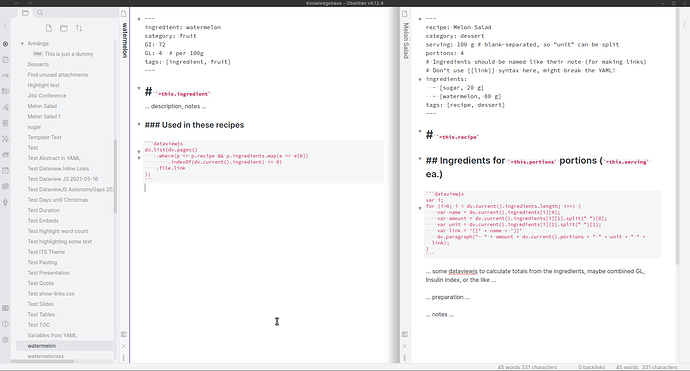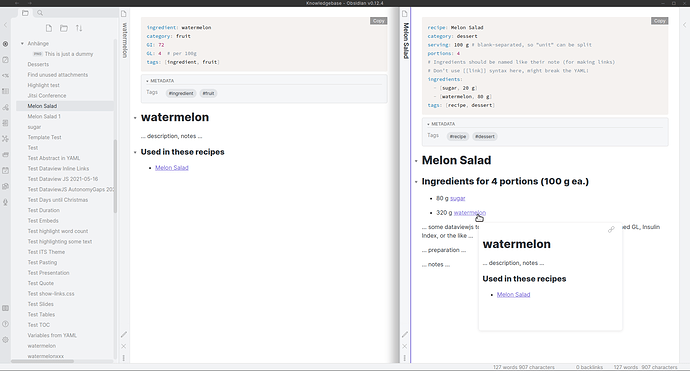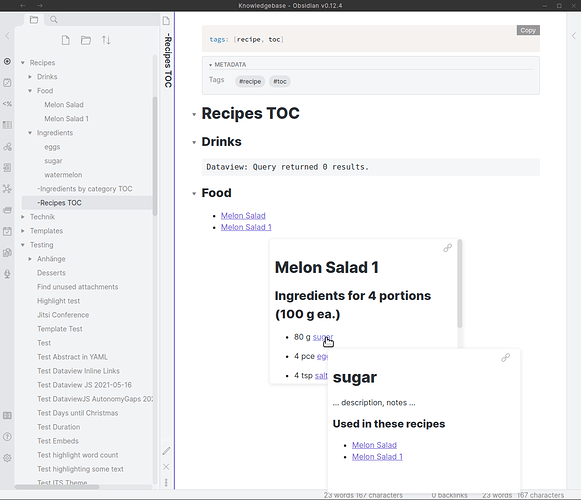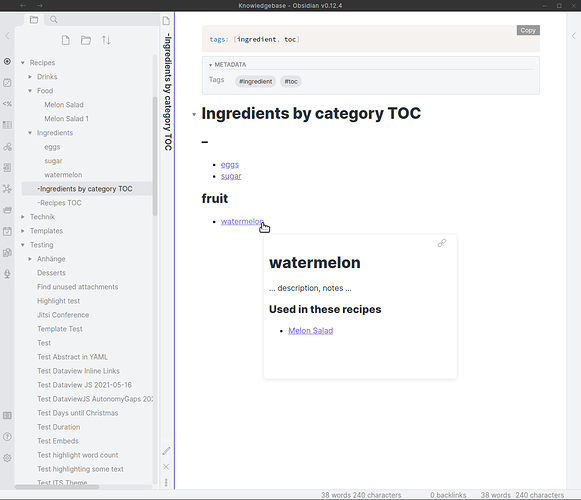Build Recipe “database” in Obsidian
*I usually write in Dutch, but for the sake of being able to ask help on the Obsidian Forum, this one’s in English. I will translate it into Dutch to keep in my vault under “Culinair”, once I know how to set this up according to my wishes. #remindertoself *
Why I want to build this “database” of interlinked recipe and ingredient notes
I have thousands of PDF Recipe books and also thousands of TXT recipes and lots of them in a recipe manager called Paprika.
I am a diabetic and need to eat #LowCarb. I plan to go over all my collected recipes and pick the recipes that are precisely that. And which are to my taste, of course.
Paprika is excellent, but having my recipes in Obsidian would give me the benefit of interlinking stuff. Also, I want my children and grandchildren to be able to access my recipes without any specific program, once I am no longer roaming the earth.
What I would like this “database” to be able to do for me
-
I want every main ingredient/category/health benefit (and maybe other stuff in the future) to have its own note and link to that note from within a recipe note.
-
I want that, because I maintain other resources that have to do with diabetes/losing weight/health/excercise/etc and I want to gain insight on how this all could come together as some sort of “life advice” per health complaint/goal. I think I can achieve that using Obsidian.
-
The ingredient note will contain important info about the ingredient. Some of them are;
- what category (meat, veg, herb, dairy, plantbased etc) (link to category note(s))
- health benefits (link to health benefits note(s))
- what’s the glycemic load
- how many carbs/fiber/fat/protein/vits/minerals etc
- other specific information about the ingredient I find valuable
-
I want to automatically insert the name (as a link) of every recipe that uses this ingredient and that links to the ingredient note, right below the above main info on the ingredient note. #important!
-
I want to automatically insert the name (as a link) of every recipe that falls under one or more categories and that links to this/those category/categories note(s), right below the above main info on the category note(s). #important!
-
I want to automatically insert the name (as a link) of every recipe that falls under one or more health benefits and that links to this/those health benefit note(s), right below the above main info on the health benefit note(s). #important!
-
I have been thinking about usings tags instead of separate notes. Not sure what the (dis)advantage of doing so would be.
What kind of structure would you advise me, to achieve the above?
Anyone other ideas to achieve the “life advice” concept ?








 at least for now.
at least for now.


